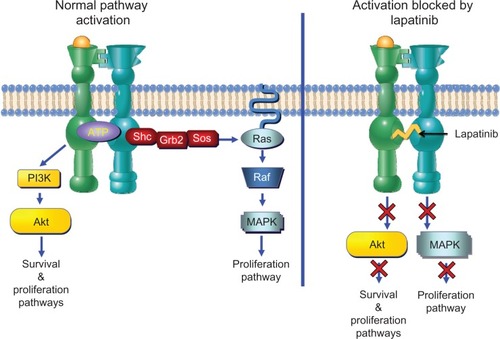Figures & data
Figure 1 Mechanism of action of lapatinib. ERBB2 homodimerization or heterodimerization with other family members is promoted by binding of ligand (such as epithelial growth factor), and possibly by high receptor density secondary to ERBB2 amplification. Two key signaling pathways activated by receptor dimerization and activation are the Pi3K-Akt pathway, which promotes both cell survival and cell cycle progression, and the mitogen-activated protein kinase (MAPK) pathway, which stimulates proliferation. Lapatinib blocks the catalytic cleft of the ERBB1 and ERBB2 receptors, thereby preventing adenosine triphosphate binding and subsequent receptor phosphorylation leading to inhibition of downstream mitogenic signaling cascades.

Table 1 Review of the pharmacokinetics of lapatinib at the dose of 1250 mg/day, approved by the Food and Drug Administration